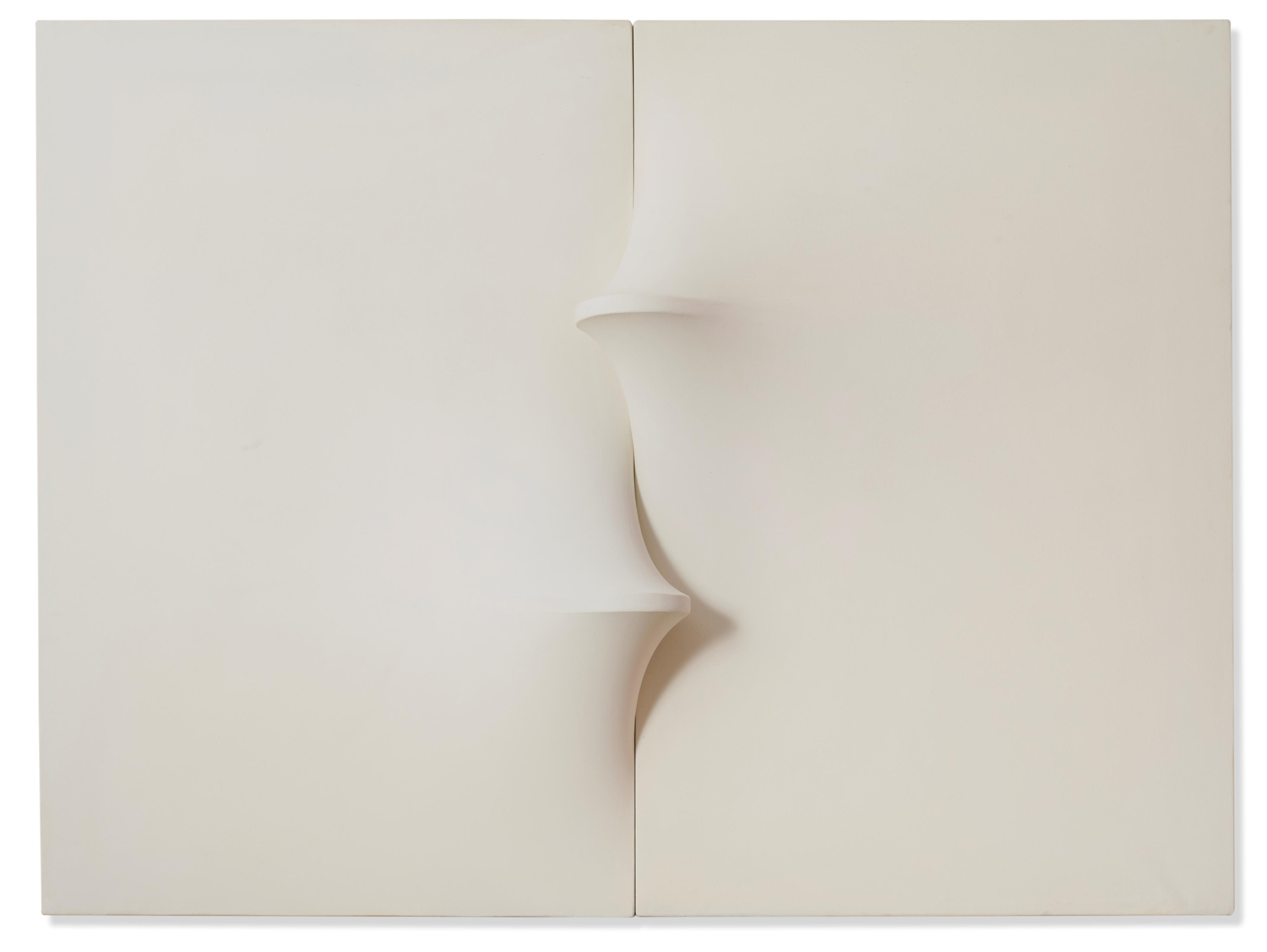Agostino Bonalumi
b. 1935, Vimercate, Italy
d. 2013, Desio, Italy
Bianco (White)
1964
Vinyl tempera on shaped canvas
90 x 120.5 cm (35 3/8 x 47 1/2 in.)
Provenance
Private Collection, Florence,
Private Collection.
Description
Executed in 1964, Agostino Bonalumi’s Bianco (White) elegantly explores the space of its shaped canvas, moulded with the artist’s signature formal delicacy and compositional judgment. A superb example of the Estroflessioni (or Extroflections) for which Bonalumi is best known, Bianco dates from the third year of his experiments with the form, and as such, demonstrates an artist achieving mastery over his radically innovative medium.
The present work exemplifies the estroflessioni that Bonalumi sought to create. The monochrome canvas protrudes outward, breaking into the third dimension to create work that borders on sculptural. The undulating forms interact not only with the space beyond the canvas, but with its own surface, overlapping one another and casting shadows upon itself, emphasising the material qualities of the medium. This act of breaking into the third dimension creates a work that not only goes beyond the picture plane, but redefines the picture plane itself, creating a vision of space and form both timeless and futuristic.
Bonalumi’s composition generates a rhythmic tension through the interplay of spatial perception of form and light, immersing the viewer in a sensory field of undulations that transcend two-dimensionality and invite meditation upon the materiality of the canvas.
This sense of the artwork as both an image and an object was vital to Bonalumi’s sense of his practice – he called his estroflessioni ‘picture-objects’ – and his voluminous surfaces are imbued with an architectural quality that challenges the acceptance of the flat canvas as a ritual prerequisite for painting. In this attentive materialism, he shared artistic sensibilities and the aesthetics of the Zero group in Germany, as well as his generation of Italian artists who, in the wake of Lucio Fontana’s spatialism, were transforming the illusionistic horizontal plane of the canvas by pursuing the physical space in and around its surface.
Indeed, Bonalumi joined Piero Manzoni and Enrico Castellani in the production of their influential journal Azimuth, before Manzoni’s tragic death in 1963. This was a publication whose materialism Manzoni had made clear: ‘We absolutely cannot consider the picture as a space onto which to project our mental scenography. It is the area of freedom in which we search for the discovery of our first images. Images which are as absolute as possible, which cannot be valued for that which they record, explain and express, but only for that which they are to be’ (P. Manzoni, ‘For the Discovery of a Zone of Images’, Spring 1957, Azimuth 2, 1960).




